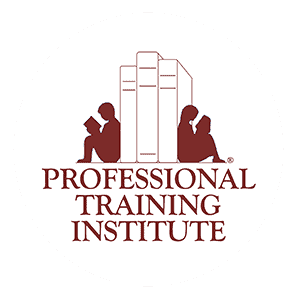
Part 3 of 3: SMART IEP Goals in Action – A Student Case Study
The third and final part of this series will take a look at the student case study of Johnny. (Names have been changed for privacy reasons.) Johnny has been diagnosed with a severe language-based learning disability that affects his speech, oral and receptive language, and ability to crack the phonetic code. He has severe deficits in phonological awareness (the ability to discern and manipulate sounds, rhyme, recognize syllables, identify first, last, and medial sounds, as well as blend and segment sounds).
For example, when given the word octopus, Johnny could not identify that this is one word with three syllables. When given the word bat, he could not discern whether bat rhymed with bit or cat. Johnny thought that the word bat began with the sound b because he was never taught the difference between letter names and sounds. When given the word cowboy and asked to repeat the word without cow, he answered cowboy instead of boy. I shared several nursery rhymes with Johnny, such as Peter Piper picked a peck of pickled peppers, and he could not discern the first sound that was repeated in every word. (This is referred to as alliteration.) When given phonemes (sounds), such as /d/ /ă/ /sh/ (/ / means the sound of) – he was unable to blend the sounds to form the word dash. Additionally, he could not segment the phonemes in his own name. His name has six letters, but only four sounds: /j/ /ŏ/ /n/ /ē/.
These are skills that should be taught and mastered in Kindergarten, but unfortunately, Johnny has made it to fourth grade without learning these skills. Johnny began the school year as a virtual non-reader, meaning that he had learned to memorize words, rely on picture cues, and use background knowledge to piece meaning together, however; he could not perform any of the aforementioned language tasks necessary for learning to read. It was surprising to me that he could not decode (use phonetic principles to unlock the alphabetic code) words. His school had labeled him as intellectually impaired not understanding that a severe, untreated language-based learning disability can look like an intellectual impairment to the untrained eye.
The following is an excerpt from Johnny’s IEP that illustrates the essence of a SMART Goal (keeping in mind that SMART stands for Specific, Measurable, Action-Based, Realistic and Relevant, and Time-Limited.) This sample describes Johnny’s current performance as well as the corresponding objectives that are engineered to facilitate the acquisition of the goal.
Individualized Education Program (IEP)
Student Name: Johnny
Current Performance Levels/Measurable Annual Goals
Goal 1 – Specific Goal Focus: Reading
Current Performance Level: What can the student currently do?
Johnny’s phonological awareness has greatly improved. He identifies and produces rhymes, alliterates (realizes that the first sounds of words are the same and identifies this), identifies the first, last, and medial sounds in words, and can identify all sounds in words with up to five sounds. Johnny knows the difference between a paragraph, sentence, syllable, word, and sound. He counts the syllables in words with up to six syllables and blends three syllables to form words.
Johnny’s sight word vocabulary has increased. He is reading and spelling regular and irregular sight words, such as there, their, and they’re. Johnny knows all consonant and short vowel sounds. He knows welded sounds (am, an, ing) and consonant digraphs (sh, th, ph, ck, wh, ch). He has learned to blend sounds to read and spell words without guessing. When given the Teacher’s College Assessment, Johnny read at a level which correlates to the end of Grade 1. He is reading real and nonsense closed syllable words with consonant digraphs, trigraphs, welded sounds, and the suffix –s.
Measurable Annual Goals: What challenging, yet attainable, goal can we expect the student to meet by the end of this IEP period? How will we know that the student has reached this goal?
Given specialized instruction in phonological awareness, phonics, fluency, vocabulary, and comprehension using evidence based methodologies, Johnny’s literacy skills will increase so that he can read more complex text as measured by biweekly probes (readings, chartings, drills, etc.) across three consecutive sessions by the end of the IEP period.
Benchmark/Objectives: What will the student need to do to complete this goal?
Johnny will:
- Read closed syllable real and nonsense words with blends with 100% accuracy as measured by chartings and oral reading across three consecutive sessions
- Read grade level regular and irregular sight words with 100% accuracy as measured by chartings and oral reading across three consecutive sessions
- Read real and nonsense words with the welded sounds ank, ink, onk, ang, unk, and ung with 100% accuracy as measured by chartings and oral reading across three consecutive sessions
- Continue to work on phonological awareness skills by producing rhymes, elision (the omission of a sound or syllable, as in I’m, let’s) of syllables and sounds, blending sounds and syllables, and segmenting words into sounds with 100% accuracy as measured by teacher observations of oral activities across three consecutive sessions
- Identify the story elements and retell a narrative using key elements from the beginning, middle, and end as measured by teacher observations during oral retellings across three consecutive sessions
- Answer inferential and literal questions after reading or listening to a text as measured by teacher observations across three consecutive sessions
- Identify the subject and three facts after reading or listening to informative text as measured by teacher observations across three consecutive sessions
A current performance level is articulated and the goals are developed to address the problem(s) in a timely manner. The most current and credible research-based approaches are utilized and everyone involved is clear about the plan. The objectives in this goal will undoubtedly lead to Johnny’s overall reading level improving which is the expected outcome of a well written IEP with SMART goals that are being delivered by a qualified professional.
Check back with us in a few months to learn about Johnny’s improvement after implementing these SMART goals.
Learn about IEP options at Commonwealth Learning Center.










Jaydin Skinner says: